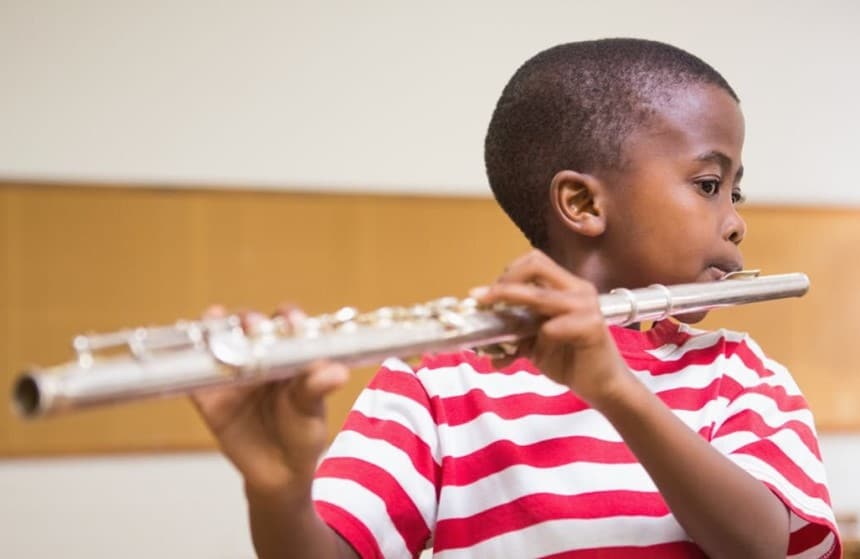Like all musical instruments, you can easily earn how to play flute if you are ready to put in the required effort and time. The flute is even a relatively simple musical instrument, and its physical appearance should give you a starter boost if you need some.
Sure, the instrument has many keys, but it is straightforward to learn once you get down to the basics. However, if you are genuinely interested in playing the flute, you’d need to purchase one and a suitable one at that.
There are options. You can either buy a flute that is publicized and marketed as beginner-friendly, or you could opt for a professional flute that would provide the best value for cost and would be suitable for all players. The latter would still be useful when you grow in skill level, while the latter would most probably be useless as a playing instrument but could serve as a training wheel for a junior one.
Many instructors first try to help a student get accustomed to an instrument before they start playing it. The same is applicable for a flute. You should grow familiar with the parts and should be proficient at assembling and disassembling the instrument. The major parts are the head joint, main body, and foot joint.
The instrument is easy to tune also. This can be done by adjusting the head joint while using a tuning app or chromatic tuner to read the flute’s sound waves. It would be advisable to start playing using a flute that is suitable for your level.
 Importance of breath
Importance of breathAir is the vehicle that makes woodwind instruments produce sounds—as such, breathing in or blowing air into the flute is essential for sound production. Care should be taken to open the mouth just wide enough to blow air but not too wide that air doesn’t travel into the instrument.
While holding the flute parallel to the floor and the side of the face, place the hole in the head joint directly in the center of the lips to achieve the best sound when playing the instrument. If the hole is not well placed, the sound produced might be distorted or not full. A flute that pays special attention to the sound quality and the need for a good head joint is the Azumi intermediate flute.
The pitch of sounds or notes produced can be modified by changing the speed of breathing. A quick release of breath brings about a higher pitch, while a slower release helps hit notes in a lower register. An effort should be made to alternate between higher and lower pitches when practicing to build a better range.
Tonguing is the term given to the tongue’s movement as if saying “too-too” while playing the flute. This movement would result in the notes being played coming out as separate entities rather than as one long gliding piece. Faster, more varied use of this technique is the principle behind staccato sounds or notes.
The glissando most commonly in use when playing flute is discrete, and it utilizes a sliding technique similar to that used when playing the piano.
Assembling a flute is quite straightforward. Starting from the top, the first step is to slide the head joint into the flute’s main body. After this, the joint head hole should be lined with the keys on the flute’s main body. Finally, the foot joint should be attached to the main body so that the main body’s keys line up perfectly with the pins running along the foot joint. This Yamaha intermediate flute has foot joint markings that make assembly easier for young users.
If you are right-handed, the flute should be held parallel to the floor and in front of your face, with your left hand coming first. The left hand’s thumb rests behind the instrument while the index middle and ring fingers hover above or cover the 2nd, 4th, and 5th holes or keys.
When the flute is lifted to be played, it should be held slightly inclined toward the ground, but the fingers and hand positions should be the same as described above. Also, the player should relax his or her shoulders and elbows to allow for a more comfortable pose.
 The finger movements and which keys are opened or covered determine the notes played and the sounds formed. To perfect the fingering on a flute, invest in a fingering chart and practice with the examples and songs provided there.
The finger movements and which keys are opened or covered determine the notes played and the sounds formed. To perfect the fingering on a flute, invest in a fingering chart and practice with the examples and songs provided there.
The flute is simple, and learning how to play the flute is an exciting experience. It doesn’t have so many keys, and it doesn’t require several accessories to use efficiently. All that is needed if you are learning how to play flute Trusted Source BBC - Play It Again Play It Again – tips on learning the flute www.bbc.co.uk is discipline and effort.
This discipline and effort should not stop just in the instrument’s learning but should extend to its maintenance and handling. There is nothing more disappointing than a poorly maintained musical instrument. When starting, it’s better to get an intermediate-level instrument that is good for learning and can be maintained to be useful later on.
This should always be improved upon, with emphasis placed on regularly cleaning the flute after every use. Such a habit is a hallmark of a responsible player and is one that should be cultivated.